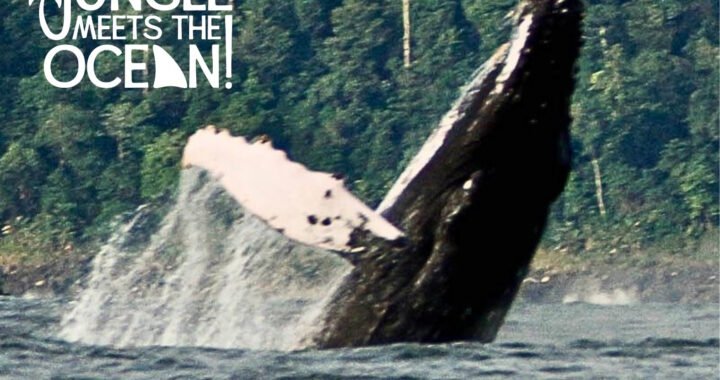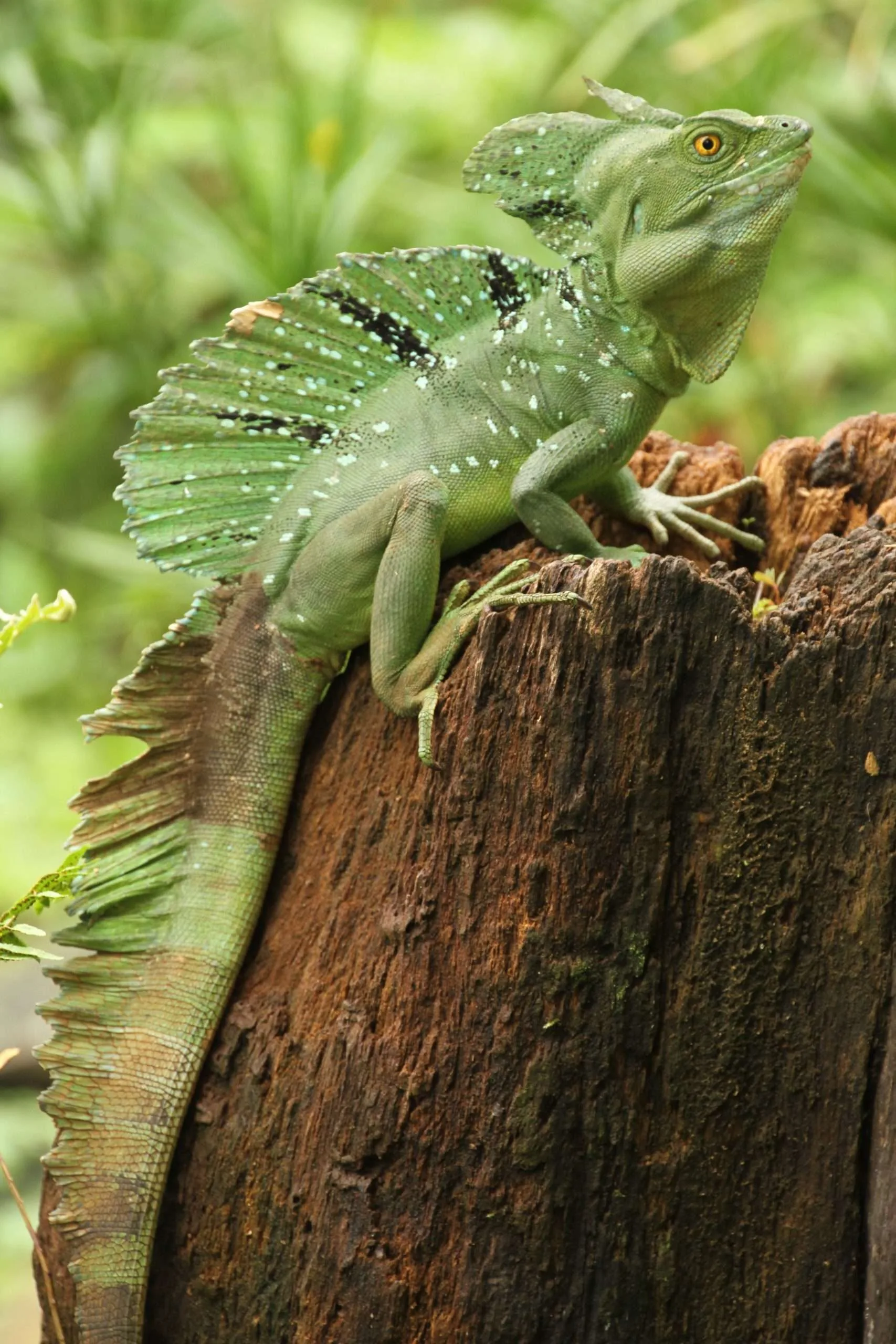
Water sprinting with the basilisks
Author: Roel de Plecker – Reptilandia
Most probably, you have seen a creature crossing a stream with high speed on his hind legs. This runner is a basilisk, also called Jesus Christ lizard. Basilisks can do this because of their large feet and specialized flattened toe fringes. These fold out when the foot presses down on the water surface.
Simultaneously, the arms are held at the sides of their bodies; this is called erect bipedal locomotion. They can run over the water for short distances, 10 to 20 meters, mostly to escape predators.
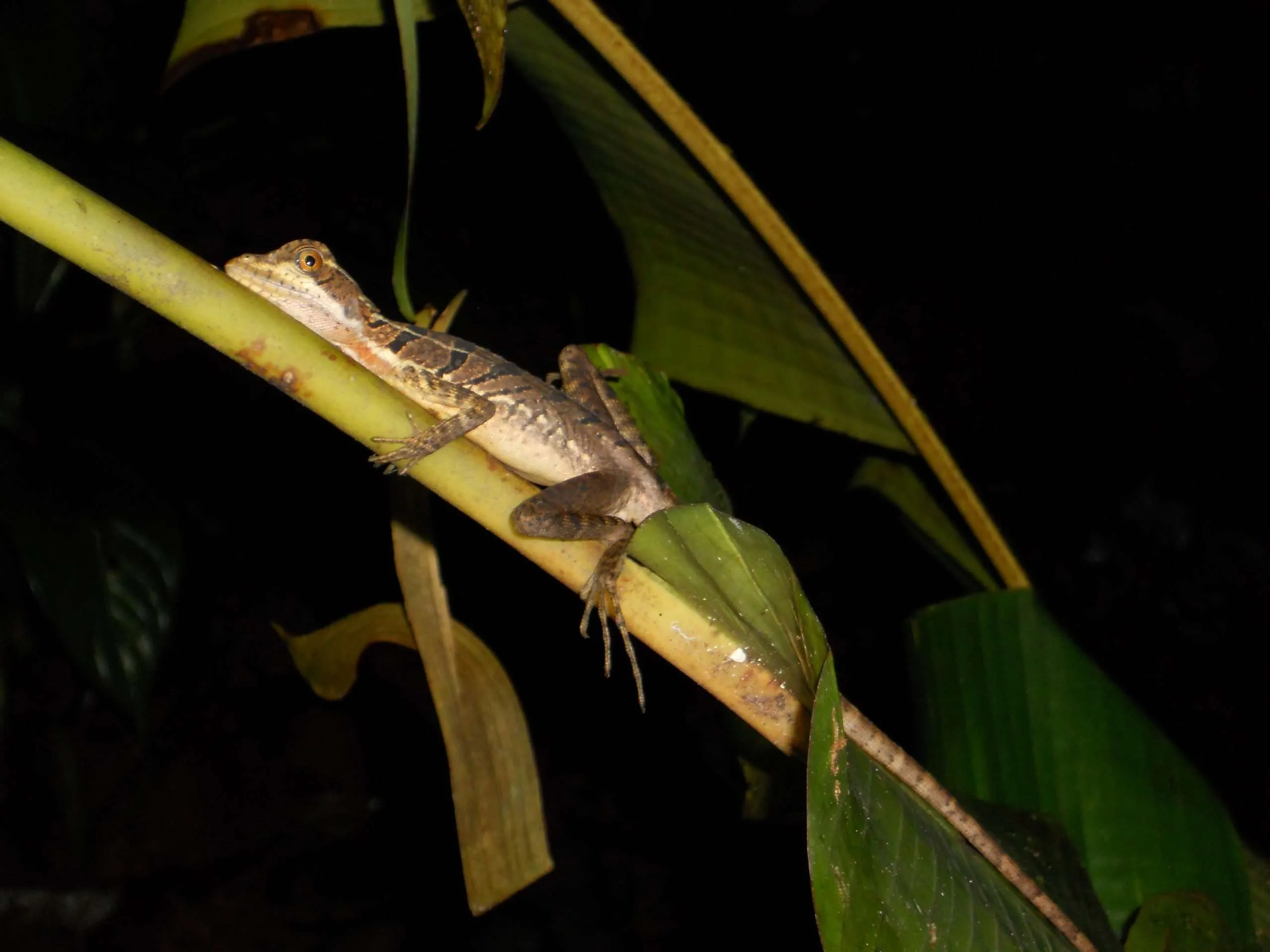
Three species occur in Costa Rica. Two species on the Atlantic versant and the north of the country are the green basilisk (Basiliscus plumifrons) and the striped basilisk (Basiliscus vittatus). On the Pacific side of Costa Rica, only one species is known, this being the brown basilisk (Basiliscus basiliscus). However, there are some old observations of the green basilisk in the Osa region.
In all species, the adult males have beautiful large crests on their heads. Only the brown and green basilisk has large sail-like crests on the back and tails. The striped basilisk has a smaller one. Both these species are larger than the striped basilisk, with males getting a total length of 90 centimeters; females are smaller and reach 60 centimeters. The tails count for about 75 % of the full size. It serves for balancing when they climb branches, trees, and rocks.
They are active during the day and are omnivores. They are known to eat crabs, shrimps, fishes, bats, seeds, flowers, fruits, plants, insects, even other lizards, and snakes. When they sleep in the trees, with adults mostly seen on branches above the water, and the smaller ones sleeping on big leaves. When disturbed, some dive into the water and swim away. Some hang on to the rocks and stay underwater for a considerable time. And others hide in an air pocket at the underside of rocks.

The striped basilisk seems to be the most terrestrial of the three and can be found farther away from water. These reptiles can lay several clutches with up to 18 eggs in the soil. They hatch after approximately three months, and the reproductive period is about ten months. You can observe the hatchlings throughout the year. Most hatchlings don’t survive their first year because they are prey for a wide variety of predators.
After one year, males are sexually mature and have to compete with the larger dominant males, which generally end up producing the offspring. The basilisks belong to the family of Corytophanidae or Casque-headed lizards. Costa Rica is the home of four of these species, the fourth one being the helmeted iguana (Corytophanes cristatus) that can be seen in both slopes’ lowlands.
At Reptilandia the green and the brown basilisk can be admired.

Busting Myths About Costa Rica Destination, Free Costa Rica Magazine #99
We’ve recently seen misinformation circulating suggesting that Costa Rica is an expensive destination.
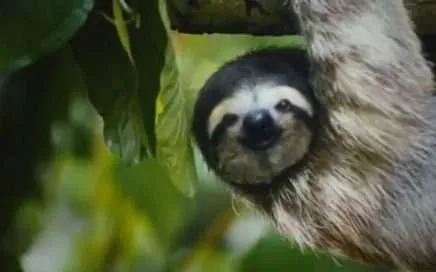
Debunking myths about Costa Rica’s South Pacific destination
There is false information circulating that suggests the South Pacific Costa Rica is an expensive destination
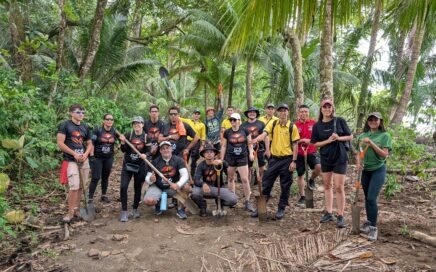
Beach Clean Up in Uvita: Community Spirit in Action at Marino Ballena National Park
Beach Clean Up in Uvita Community Spirit in Action at Marino Ballena National Park Author: Sophie Schindler
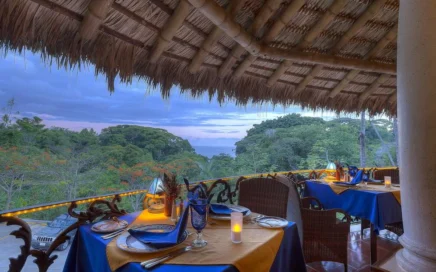
Costa Rica’s First 100% Gluten-Free Gourmet Restaurant
Costa Rica’s First 100% Gluten-Free Gourmet Restaurant La Palapa Restaurant: Indulgence Without Compromise Travelers come to Costa Rica seeking nature, adventure – and memorable dining. At Cuna del Ángel, a boutique hotel nestled in the […]

Adventure Begins Where Comfort Ends: Our Rain-Soaked Snorkeling Tour to Caño Island
What I Learned from Traveling in the Rain or Why a Plastic Cape Can Teach Humility Our Snorkeling Tour to Caño Island
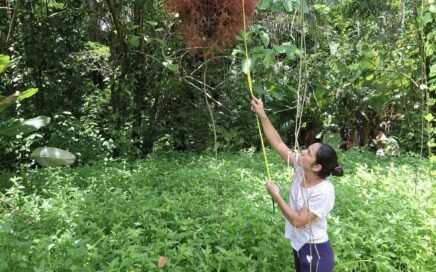
Increasing Biodiversity in the Path of the Tapir Biological Corridor
The area including the Path of the Tapir Biological Corridor in Costa Rica, is one of the few places with increasing biodiversity.
What to do, Where to eat and Where to stay…
South Pacific Costa Rica Beaches
Looking for business directories, maps or other printouts? We’ve got that too!
Dare to Discover and Enjoy…
Check out…
Need help planning your next trip to Costa Rica? We look forward to help you!
Email: carlos@ballenatales.com
Phone: +(506) 8946 7134 or +(506) 8914 1568
